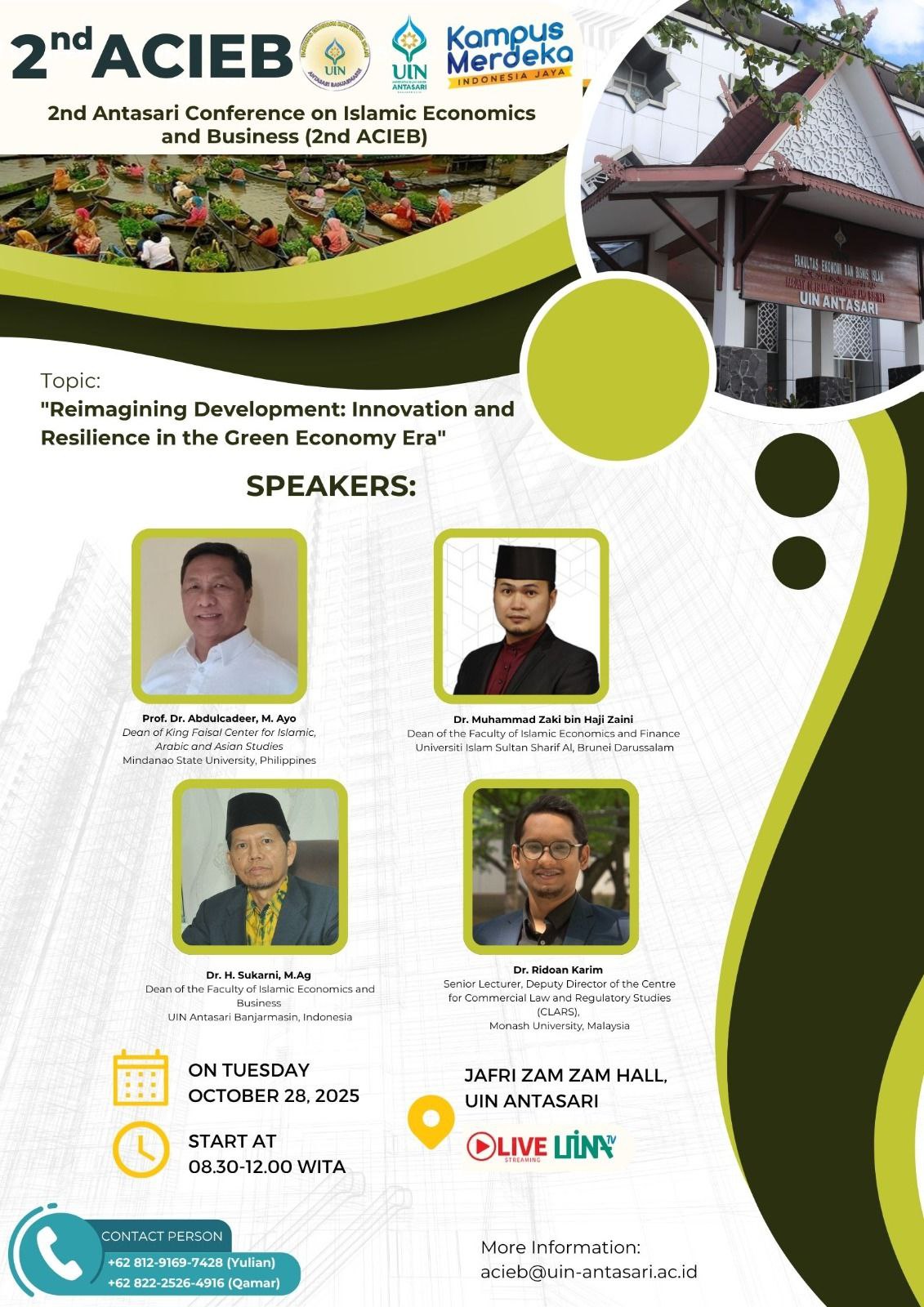Economy Reimagined: Development through Sustainability and Inclusion
Keywords:
Green Economy, Sustainable Development, Gender Equality (SDG 5), Islamic Feminism, Economic GrowthAbstract
In recent years, as the climate crisis has become major topic in global discourses, green economy emerged as a revolutionary approach for balancing economic transformation with environmental responsibility. Although worldwide awareness of this idea has accelerated, recent discussions on green economy framework often overlooks the role of women and girls empowerment (Sustainable Development Goal 5) in enabling long-term resilience. The purpose of this paper is to explore the role of gender-equal development strategies in enhancing perserverance and innovation in environmentally conscious economic growth. Through integrative, literature-based analysis across relevant fields, this study highlights the connection between innovation and resilience within the green economy and the principles of sustainable development, particularly those promoting women’s and girls’ empowerment. In many Muslim-majority contexts, interpretations of Islamic teachings have historically constrained women’s participation in economic spheres. This paper argues that reinterpreting gender equality through an Islamic feminist lens can strengthen women’s contribution to the green economy by expanding access, participation, and leadership in sustainable sectors. It identifies three key mechanisms: ethical reinterpretation of Islamic teachings, recognizing women’s agency through economic empowerment, as well as resilient transformation through gender-inclusive development aligned with SDG 5 and green economy principles.References
Azizah, S. N., Qoyum, A., & Prasojo. (2019). Islam, women labour and economic development. CIMAE Journal, 2, 221–234.
Barlas, A. (2002). "Believing women" in Islam: Unreading patriarchal interpretations of the Qur’an.University of Texas Press.
Fitria, T. N. (2025). A Working Wife: An Islamic Economic Perspective on Women’s Economic Participation in Household and Workforce. Jurnal Ilmiah Ekonomi Islam, 11(03).
Georgeson, L., Maslin, M., & Poessinouw, M. (2017). The global green economy: a review of concepts, definitions, measurement methodologies and their interactions. Geo: Geography and Environment, 4(1), e00036.
Glomm, G., Kawaguchi, D., & Sepulveda, F. (2008). Green taxes and double dividends in a dynamic economy. Journal of policy modeling, 30(1), 19-32.
International Labour Organization. (2023). Women and men in the informal economy: A statistical update. International Labour Office. https://www.ilo.org/sites/default/files/2024-04/Women_men_informal_economy_statistical_picture.pdf
IPCC. (2022). Climate Change 2022: Impacts, Adaptation and Vulnerability — Summary for Policymakers (IPCC AR6 WGII SPM). Intergovernmental Panel on Climate Change.
Khawar, M. (2024). Economic agency of women in Islamic economic philosophy: going beyond Economic Man and Islamic Man. International Journal of Social Economics, 51(3), 364-376.
Leach, M., Mehta, L., & Prabhakaran, P. (2016). Gender equality and sustainable development: A pathways approach. The UN Women Discussion Paper, 13, 2016.
Malik, I., Karimullah, S., Kocaeli, H. O., & Rahman, …, (2025). Gender Analysis in the Islamic Law-Based Ecofeminism Movement for Ecosystem Protection. El-Mashlahah, 15(1), 101-124. https://doi.org/10.23971/el-mashlahah.v15i1.9040
Nugroho, A. F., & Ichwan, M. N. (2023). Deconstruction of Patriarchal Interpretation of the Concept of Nafsin Wahidah in Surah An-Nisa: An Analysis of the Hermeneutics of Tawḥīd Asma Barlas’ Perspective on Gender Equality. Al-Fahmu: Jurnal Ilmu Al-Qur’an dan Tafsir, 4(2), 649-657. https://doi.org/10.58363/alfahmu.v4i2.631
Ojaghlou, M., Ugurlu, E., Kadłubek, M., & Thalassinos, E. (2023). Economic activities and management issues for the environment: An Environmental Kuznets Curve (EKC) and STIRPAT analysis in Turkey. Resources, 12(5), 57. https://doi.org/10.3390/resources12050057
Organisation for Economic Co-operation and Development. (2014). Women, government and policy making in OECD countries: Fostering diversity for inclusive growth. OECD Publishing. https://doi.org/10.1787/9789264210745-en
Organisation for Economic Co-operation and Development. (2025). Persistent gender gaps in paid and unpaid work: Gender equality in a changing world. OECD Publishing. https://www.oecd.org/en/publications/2025/05/gender-equality-in-a-changing-world_5a0af5ef/full-report.html
Ramadhania, S. (2025). Maqasid Syariah dan Kesetaraan Hak Perempuan. MLIJo: Maliki Law and Islamic Journal, 1(1), 1–9. https://doi.org/10.18860/mlijo.v1i1.18035
UN Women & Pardee Center. (2023). Gendered analysis of the impact of climate change (technical/data report). UN Women.
UN Women Asia & the Pacific. (2020, September). Gender pay gaps in Indonesia – September 2020: Women earn 23% less than men on average (Statistics: Gender pay gaps in Indonesia). UN Women. https://asiapacific.unwomen.org/sites/default/files/Field%20Office%20ESEAsia/Docs/Misc/2020/09/id-Gender-Pay-Gap-Statistic-in-Indonesia-September-2020.pdf
UN Women. (2023). Gender equality in the context of climate change. UN Women. https://www.unwomen.org/en/news-stories/fact-sheet/2023/09/gender-equality-in-the-context-of-climate-change
United Nations Environment Programme. (2023). Emissions Gap Report 2023: Broken record—temperatures hit new highs, yet world fails to cut emissions (again). UNEP. https://www.unep.org/resources/emissions-gap-report-2023
Women in Informal Employment: Globalizing and Organizing (WIEGO). (2021). Statistical picture of the informal economy. https://www.wiego.org/informal-economy/statistical-picture
World Bank. (2023). Poverty and climate change: Reducing vulnerability with a green transition. The World Bank. https://www.worldbank.org/en/topic/climatechange/publication/poverty-and-climate-change
World Economic Forum. (2023). Global Gender Gap Report 2023: Gender gaps in the workforce.

